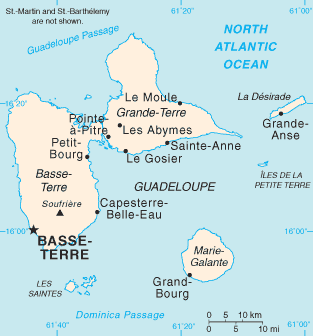|
Chondropoma Crenulatum
''Chondropoma crenulatum'' (ex ''Diplopoma crenulatum'')Watters G.T. (2014)A preliminary review of the Annulariidae ''The Nautilus'' 128 : 65-90. is a species of operculate land snail, terrestrial gastropod mollusk gastropod in the family Pomatiidae. Distribution Distribution of ''Chondropoma crenulatum'' include: * Saint Barthélemy.Questel K. (2017) "Les escargots terrestres de Saint-Barthélemy" ''Le bulletin de l'Agence territoriale de l'environnement de Saint-Barthélemy'' 1 :10-13. * Saint MartinCoomans H.E. (1967)The non-marine Mollusca of St. Martin (Lesser Antilles) ''Studies on the fauna of Curaçao and other Caribbean islands'' 24 : 118-145. * Antigua * Barbuda * GuadeloupeCharles L. (2016) "Inventaire des mollusques terrestres de Guadeloupe, Petites Antilles : données préliminaires" ''MalaCo'' 12 : 47-56. * Petite Terre * Marie-Galante * La Désirade * Martinica Shells of ''Chondropoma'' sp. were also collected in Dominica.Robinson D. G., Hovestadt A., Fields ... [...More Info...] [...Related Items...] OR: [Wikipedia] [Google] [Baidu] |
Animalia
Animals are multicellular, eukaryotic organisms in the biological kingdom Animalia. With few exceptions, animals consume organic material, breathe oxygen, are able to move, can reproduce sexually, and go through an ontogenetic stage in which their body consists of a hollow sphere of cells, the blastula, during embryonic development. Over 1.5 million living animal species have been described—of which around 1 million are insects—but it has been estimated there are over 7 million animal species in total. Animals range in length from to . They have complex interactions with each other and their environments, forming intricate food webs. The scientific study of animals is known as zoology. Most living animal species are in Bilateria, a clade whose members have a bilaterally symmetric body plan. The Bilateria include the protostomes, containing animals such as nematodes, arthropods, flatworms, annelids and molluscs, and the deuterostomes, containing the echinode ... [...More Info...] [...Related Items...] OR: [Wikipedia] [Google] [Baidu] |
Terrestrial Animal
Terrestrial animals are animals that live predominantly or entirely on land (e.g. cats, dogs, ants, spiders), as compared with aquatic animals, which live predominantly or entirely in the water (e.g. fish, lobsters, octopuses), and amphibians, which rely on a combination of aquatic and terrestrial habitats (e.g. frogs and newts). Some groups of insects are terrestrial, such as ants, butterflies, earwigs, cockroaches, grasshoppers and many others, while other groups are partially aquatic, such as mosquitoes and dragonflies, which pass their larval stages in water. Terrestrial animals tend to be more developed and intelligent than aquatic animals. Terrestrial classes The term "terrestrial" is typically applied to species that live primarily on the ground, in contrast to arboreal species, which live primarily in trees. There are other less common terms that apply to specific groups of terrestrial animals: *Saxicolous creatures are rock dwelling. "Saxicolous" is derived from t ... [...More Info...] [...Related Items...] OR: [Wikipedia] [Google] [Baidu] |
Dominica
Dominica ( or ; Kalinago: ; french: Dominique; Dominican Creole French: ), officially the Commonwealth of Dominica, is an island country in the Caribbean. The capital, Roseau, is located on the western side of the island. It is geographically situated as part of the Windward Islands chain in the Lesser Antilles archipelago in the Caribbean Sea. Dominica's closest neighbours are two constituent territories of the European Union, the overseas departments of France, Guadeloupe to the northwest and Martinique to the south-southeast. Dominica comprises a land area of , and the highest point is Morne Diablotins, at in elevation. The population was 71,293 at the 2011 census. The island was settled by the Arawak arriving from South America in the fifth century. The Kalinago displaced the Arawak by the 15th century. Columbus is said to have passed the island on Sunday, 3 November 1493. It was later colonised by Europeans, predominantly by the French from the 1690s to 1763. The Frenc ... [...More Info...] [...Related Items...] OR: [Wikipedia] [Google] [Baidu] |
Martinica
Martinique ( , ; gcf, label= Martinican Creole, Matinik or ; Kalinago: or ) is an island and an overseas department/region and single territorial collectivity of France. An integral part of the French Republic, Martinique is located in the Lesser Antilles of the West Indies in the eastern Caribbean Sea. It has a land area of and a population of 364,508 inhabitants as of January 2019.Populations légales 2019: 972 Martinique INSEE One of the , it is directly north of , northwest of |
La Désirade
La Désirade is an island in the French West Indies, in the Lesser Antilles of the Caribbean. It forms part of Guadeloupe, an overseas region of France. History Archaeological evidence has been discovered that suggests that an Amerindian population lived on La Désirade from the 3rd to the 16th centuries. Spanish colonization Deseada was the first island sighted by Christopher Columbus in 1493. When he landed there during his second voyage to America, he took possession of the island on behalf of the Spanish crown, followed by the island of Marie-Galante. Like other Antillean islands, it served as a hideout for pirates or corsairs who attacked Spanish overseas possessions. Some sources indicate that the island owes its name to the relief of the members of Columbus crew who saw the first dry land since leaving the Canary Islands of Spain. They cried out: "Oh, desired island" The French name ''La Désirade'' is an adaptation of its historical name in Spanish (''La Deseada'') ... [...More Info...] [...Related Items...] OR: [Wikipedia] [Google] [Baidu] |

.jpg)
